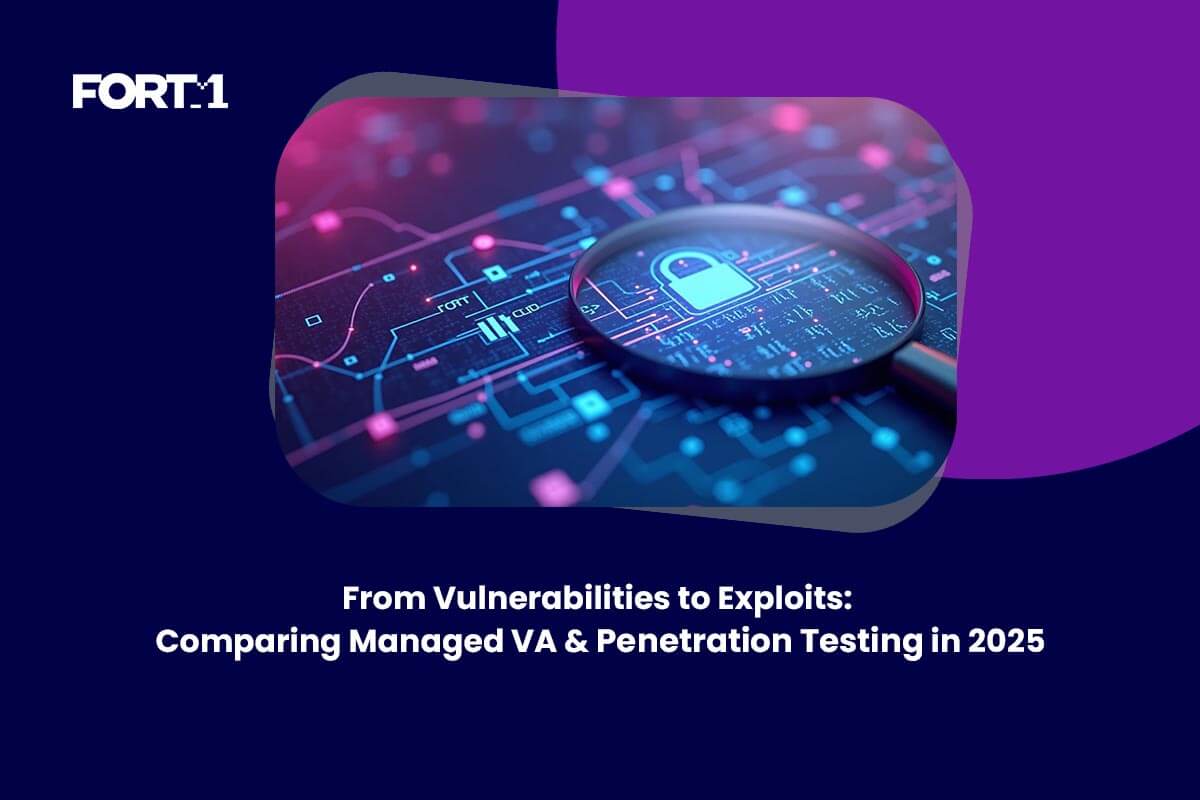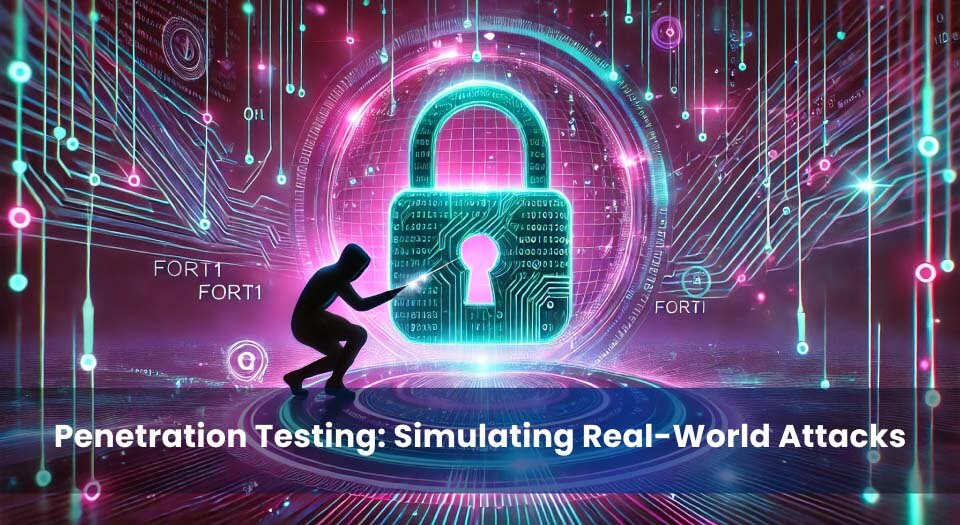




Managed VA vs. Pen Testing are two essential cybersecurity strategies businesses must consider in 2025. Managed Vulnerability Assessment (Managed VA) continuously scans IT systems to detect weaknesses, while Penetration Testing (Pen Testing) actively exploits vulnerabilities to assess the potential impact of cyberattacks. Organisations that rely on only one approach may leave security gaps unaddressed, increasing their risk exposure.
Given the rapid evolution of cyber threats, including AI-driven attacks and automated exploits, businesses must adopt a proactive security strategy. According to the Australian Cyber Security Centre (2025 Report), automated cyber threats have increased by 65% year-over-year, making Managed VA vs. Pen Testing a crucial discussion for security leaders.
This article explores Managed VA vs. Pen Testing, comparing their strengths, limitations, and use cases. It also provides recommendations for 2025 cybersecurity strategies to ensure organisations stay ahead of emerging threats.
Managed Vulnerability Assessment (Managed VA) is a proactive cybersecurity approach that systematically identifies, categorises, and prioritises security vulnerabilities across an organisation’s IT infrastructure. Unlike traditional vulnerability assessments, Managed VA is continuous and automated, ensuring that businesses receive real-time threat insights rather than periodic security snapshots. This process is essential for minimising attack surfaces and preventing cybercriminals from exploiting weaknesses before they are patched.
The cybersecurity landscape in 2025 has seen Managed VA solutions enhanced by AI-driven automation and real-time risk intelligence. Key advancements include:
The following table highlights the improvements brought by Managed VA compared to traditional VA approaches:
| Feature | Traditional Vulnerability Assessment | Managed VA (2025) |
|---|---|---|
| Scanning Frequency | Periodic (monthly or quarterly) | Continuous real-time scanning |
| Automation | Limited automation, manual analysis | AI-powered automated detection |
| False Positives | Higher due to lack of AI refinement | Reduced false positives with machine learning |
| Integration | Standalone assessment tools | Integrated with SIEM & threat intelligence platforms |
| Risk Prioritisation | Basic risk scoring | Advanced exploit prediction & risk-based prioritisation |

Penetration Testing (Pen Testing) is a controlled cybersecurity exercise where ethical hackers simulate real-world attacks to identify security weaknesses and assess risk exposure. Unlike Managed Vulnerability Assessment (Managed VA), which focuses on identifying vulnerabilities, Pen Testing attempts to exploit them to determine the actual impact of a breach.
In 2025, organisations face a growing number of complex cyber threats, making advanced Pen Testing methodologies essential for proactive defence strategies. Regulatory bodies, such as the Australian Critical Infrastructure Act, now mandate penetration testing for high-risk industries, ensuring compliance-driven security measures.
| Feature | Manual Pen Testing | Automated Pen Testing | Hybrid Pen Testing |
|---|---|---|---|
| Execution Time | Weeks to months | Minutes to hours | Optimised for speed & depth |
| Effectiveness | Highly effective for complex attacks | Limited to predefined attack patterns | Combines best of both methods |
| Cost | Expensive due to human expertise | Lower cost, scalable | Moderate cost with better ROI |
| Use Cases | Advanced threat simulations | Routine security testing | Comprehensive security validation |
Managed Vulnerability Assessment (Managed VA) and Penetration Testing (Pen Testing) serve distinct yet complementary functions in cybersecurity. Managed VA continuously scans IT environments to identify and prioritise vulnerabilities, ensuring that known security flaws are patched before cybercriminals exploit them. However, it does not actively test exploitability. This is where Pen Testing becomes essential—by simulating real-world attack scenarios, ethical hackers determine whether vulnerabilities can be exploited to gain unauthorised access, escalate privileges, or compromise sensitive data.
Organisations that combine both approaches benefit from continuous monitoring (Managed VA) and realistic attack simulations (Pen Testing), leading to a comprehensive risk mitigation strategy.
| Feature | Managed VA | Penetration Testing |
|---|---|---|
| Approach | Automated, continuous scanning | Manual, human-driven attack simulation |
| Detection Speed | Real-time, frequent scanning | Point-in-time assessment |
| Accuracy | Identifies vulnerabilities but may have false positives | Validates exploitability with real-world attack methods |
| Cost | Lower cost, scalable | Higher cost due to skilled labour |
| Risk Prioritisation | Automated risk scoring based on CVSS | Determines actual business impact of exploits |
✔ Broad, automated security monitoring across multiple assets.
✔ Real-time vulnerability identification with AI-driven scanning.
✔ Cost-effective and scalable for continuous security assessment.
✔ Human-driven testing simulates sophisticated cyberattacks.
✔ Validates exploitability rather than just identifying vulnerabilities.
✔Essential for regulatory compliance and high-risk environments.
❌ Managed VA may not detect zero-day vulnerabilities since it relies on existing vulnerability databases.
❌ Pen Testing is resource-intensive, costly, and requires skilled professionals.
❌ Managed VA generates high volumes of vulnerability data, which can lead to alert fatigue if not properly prioritised.
❌ Pen Testing results can become outdated if security teams do not conduct periodic re-assessments.
| Feature | Managed VA | Penetration Testing |
|---|---|---|
| Approach | Automated, continuous scanning | Manual, human-driven attack simulation |
| Detection Speed | Real-time, frequent scanning | Point-in-time assessment |
| Accuracy | Identifies vulnerabilities but may have false positives | Validates exploitability with real-world attack methods |
| Cost | Lower cost, scalable | Higher cost due to skilled labour |
| Risk Prioritisation | Automated risk scoring based on CVSS | Determines actual business impact of exploits |
Selecting the appropriate cybersecurity approach depends on business size, industry regulations, risk tolerance, and security objectives. While Managed Vulnerability Assessment (Managed VA) and Penetration Testing (Pen Testing) serve distinct functions, organisations can strategically combine both for a multi-layered security strategy.
✔ Routine Security Monitoring – Ideal for ongoing detection of vulnerabilities across IT assets.
✔ Compliance Audits – Meets regulatory standards by ensuring continuous security assessments.
✔ Cost-Effective Vulnerability Management – Automated scanning minimises operational costs while providing real-time risk intelligence.
✔ Regulatory Compliance – Required for finance, healthcare, and critical infrastructure sectors under standards like ISO 27001:2025 and the Australian Critical Infrastructure Act.
✔ High-Risk Applications – Essential for cloud-native systems, IoT devices, and Web3 applications, where traditional vulnerability scans are insufficient.
✔ Validating Exploitability – Determines if vulnerabilities can be actively exploited to gain unauthorised access or escalate privileges.
A comprehensive cybersecurity strategy integrates Managed VA for continuous monitoring and Pen Testing for in-depth validation. By leveraging both, businesses can proactively mitigate vulnerabilities while ensuring resilience against real-world cyber threats.
A robust cybersecurity strategy in 2025 requires a multi-layered approach that combines Managed Vulnerability Assessment (Managed VA) and Penetration Testing (Pen Testing). While Managed VA ensures continuous monitoring and rapid vulnerability detection, Pen Testing provides in-depth exploitation analysis, validating the real-world impact of security weaknesses. Relying solely on one method leaves organisations vulnerable to emerging threats, regulatory non-compliance, and evolving cyberattack tactics.
Businesses operating in high-risk industries or handling sensitive data must integrate both approaches to stay ahead of cybercriminals and meet regulatory requirements such as the Australian Critical Infrastructure Act and ISO 27001:2025 (source).
Fort1 provides comprehensive cybersecurity solutions tailored to business needs. To ensure your organisation remains resilient against evolving threats, visit Fort1 to schedule a security assessment or consult with our expert cybersecurity team. Proactive security measures today prevent costly breaches tomorrow.

Fort1 provides comprehensive cybersecurity solutions tailored to protect your business from evolving digital threats. With expertise in penetration testing, dark web monitoring, and managed detection services, we empower organisations to stay secure and resilient in the face of modern cyber challenges.
Copyright @2024 Fort1. All Rights Reserved by Fort1.